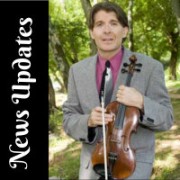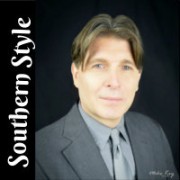The cowboy way
I have found in recent years with the barren desert I find on television I tend to gravitate towards the tried and true westerns that dominated the film screen and the television screens.
As I flip through I know if I come to rest on someone dressed in a cowboy outfit generally with few exceptions, I will find a show I can relax and enjoy. Good will always win and the bad guys will get what they deserve.
This is especially true with anything that the Duke may be riding in. For any of those of you under 20, that might not know that nickname, its John Wayne.
As America ushered in the 1970s this type of film and television show became harder to find as the trend towards urban settings began.
After Clint Eastwood his alternate western hero in “Fistful of Dollars” in 1964 then many of the westerns began to have an uncomfortable edge to them, so I tend to lean towards those shot before these.
I was surfing the Internet last week and looking at some of the resources telling about some of the great western stars of the past.
As I looked through, I realized that so many of these great performer’s films that could be airing in the mainstream generally are limited to specialty channels.
It’s not likely you will find Hopalong Cassidy, Lash LaRue, Tim McCoy and Charles Starrett riding across your TV screens much anymore.
There were so many great stars that kept the baby boomers entertained as they went to the theaters matinees growing up and so many others that made television the resting-place for much of the western genre and stars well into the 1970s.
By 1974, the western genre on television except for an occasional film was saying goodbye much like it had in theaters 20 years before.
I’ll never forget Ken Curtis “Festus” from “Gunsmoke” telling me how the CBS network just simply forgot to put them on the schedule one year, after 25 years, they just simply forgot. Stations got up in arms and had them put back on but it wasn’t long until we said goodbye to those characters that had been part of America’s lives on radio and then on television for more than a quarter century.
If you have an interest in the early stars of the western films and have access to the internet, I suggest you look at The Old Corral website at B-westerns.com (www.b-westerns.com/)
It has a vast amount of resources on all the stars from Buster Crabbe to Bob Livingston, Monte Hale to Tex Ritter.
Of course, many of those western stars moved onto the little screen with television shows like Gene Autry and Roy Rogers. Others had their movies repackaged for television and those ran solidly for years to come in syndication.
Many of the old shows were no longer airing when I was growing up in the 70s and 80s. Of course “The Lone Ranger” starring Clayton Moore which ended in 1955 was still in syndication, Bonanza, Gunsmoke, Maverick, and some of the other 1960s television sagebrush stories but the old western stars of the matinees were all but gone except in personal appearances at film festivals.
I remember sitting in Gene Autry’s office one-time years ago talking with the late western connoisseur and producer Alex Gordon that worked for Gene. We were discussing many of the old stars about which I had knowledge when he mentioned the name of a well-known western producer Pop Sherman. I found myself in the dark largely because by the time I came along the Hopalong Cassidy films that he created were no longer a television staple. When I told him I had a hole in my knowledge about Sherman, I’ll never forget how Alex reacted “That’s a hole as large as the Grand Canyon itself,” he said in his English accent. That is when I realized there was so much more of the western genre that I needed to know about. If you want to know more about Hopalong Cassidy, visit www.hopalong.com.
Traveling stage shows such as Tommy Scott’s Country Caravan and Wild West Show where you might find Tim McCoy doing his whip act or Sunset Carson doing a shooting act there’s more about this at the Old Corral website.
While some have tried to recreate the western magic in productions through the years such as on “Dr. Quinn, Medicine Woman,” it wasn’t quite the same.
I visited the set of Dr. Quinn during its second season and walked down the old western street, through the Indian village and the military camp. I longed to slip into my western garb and step back in time but in this instance that opportunity did not arise and I was simply able to watch Jane Seymour, Chad Allen and the other actors as they created a different time and place for their audience.
Thanks to numerous cable and Roku choices, many of the old cowboys are still riding the range for us to enjoy.
As my old friend the late Roy Rogers said on our final visit, “Tell all the folks back home I said “Howdeeeeeee!!!”



